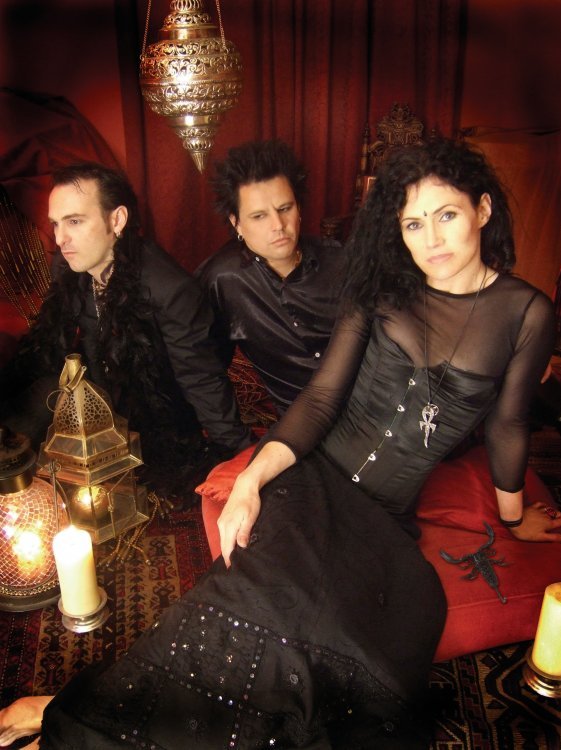
Inkubus Sukkubus are a British Goth and pagan band, formed in 1989 by Candia Ridley, Tony McKormack and Adam Henderson.
This band's work provides examples of:
- Artistic License – History: "Burning Times". It conflates the Inquisitions with the Witch Trials (the two overlapped sometimes, but they were not synonymous) and then goes on to claim that the Inquisitions targeted pagans, which is incredibly anachronistic. Most of the victims of the Inquisitions were avowed, even devout, Christians who got on the wrong side of Church's hierarchy (e.g. Joan of Arc, Girolamo Savonarola, Jacques de Molay).
- Cover Version: Of "Paint It Black" by The Rolling Stones and "Delilah" by Tom Jones.
- Domestic Abuser: "Reptile", the singer of Vampyre Erotica, while a vampire talking about eating their partner, also has this undertones.
- The Fair Folk: "Away with the Faeries" and "Goblin Jig." Both songs have faeries as their main focus and highlight how they tend to be tricksters who lead you off the path, but also provide you with a sense of "wonder, fever, pain and passion."
- The Hecate Sisters: "Trinity", which focuses on the three faces of the Triple Goddess.
- Longest Song Goes Last:
- Wytches ends with "Devils". (5:25)
- Science and Nature ends with their cover of "Sympathy for the Devil" (9:38).
- The Dark Goddess ends with "Karnayna". (6:02)
- The Goat ends with "Melancholy Blue". (5:52)
- Long Runner: Pretty much. Their album discography shows just as well.
- My Nayme Is: Their name was originally spelled "Incubus Succubus", but was changed for numerological reasons.
- Pedophile Priest: "Preacher Man" focuses on a priest who uses his position of authority to get away with raping young boys.
- Revenge Ballad: "Dark Sisters", a rallying cry to witches to take Revenge Against Men.
- The Sacred Darkness:
- "Dark Mother", which focuses on the Triple Goddess's Crone aspects, links to death, decay and rebirth.
- "Goddess of Darkness and Light" highlights the two sides of the Goddess- with her being portrayed as both loving and hedonistic, but also cruel and sadistic.
- "Supernature" highlights that the Goddess is found in both darkness and light, as well as in life and death.
- "Io Pan" presents the named deity as "God of Light and God of Darkness" as well as "God of Death and all creation."
- "Hail the Holly King" is jolly ode to the God of the dark and cold half of the year.
- Sadly Mythtaken: "Lilith, Kali, Nemesis, Morrigan" proclaims all of those mythological figures to be "queens of the darkness, queens of the night" - despite the fact that that only describes Lilith. The rest are/were simply war goddesses.
- Succubi and Incubi: In the name, and the song "Incubus" (among others).
- The Vamp: Subverted with "Catherine", as it's left unclear if the titular character is genuinely seducing the men around her, or is simply just an attractive young woman who the 'unloved wives' have killed to stop their husbands from lusting after her.
- War Is Hell: "Atrocity" focuses on a poor farmer boy going off to war and then lists all the horrors and atrocities he will commit while on the front lines.
